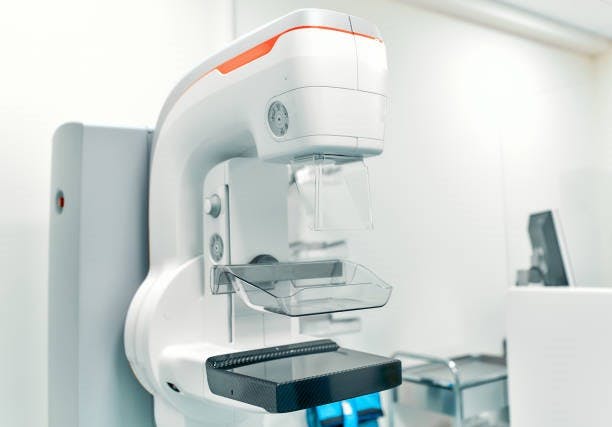3-D vs. 2-D Mammograms: What's the Difference?

What is 3-D Mammography?
When it comes to beating breast cancer, early detection is key. For that reason, the American Cancer Society recommends that women get annual mammograms between the ages of 45 and 541. Women who have more risk factors for breast cancer can start screenings earlier, based on the advice of their doctors.
Mammograms, or X-ray imaging of the breasts, are a common way to screen for breast cancer. In recent years, a more advanced form of mammogram has emerged as an option, 3-D mammography. 3-D mammograms might be a better option for some women.

Who Should Consider a 3-D Mammogram?
When it comes to screening for breast cancer, any type of mammogram is usually better than no mammogram. There's no reason to feel that you're getting a lower quality of care if you have a traditional mammogram versus a 3-D mammogram.
That said, if you're at the age when you should begin screening, a 3-D mammogram can be worth considering, particularly if you have dense breasts.
What Happens During 3-D Mammography?
While 3-D mammograms provider clearer images than traditional mammography, they share one notable feature in common. Both types imaging need to squish or compress the breasts when taking the pictures.
During the imaging, the breasts are supported by a tray, then pressed down on by a plate. The goal of the compression is to spread out the breast tissue to capture a better picture. As the machine takes the pictures, it moves in an arc from one side of the breast to the other.
It only takes a few seconds to capture each image and the entire screening usually takes about 15 minutes.
3-D vs. 2-D Mammograms
Whether you choose to have a 2-D or 3-D mammogram, one thing remains the same. The process involves taking X-ray images of your breast tissue. During a 2-D mammogram, four images are taken. Usually, a picture is taken of each breast from the side and the top.
A 3-D mammogram captures considerably more images of the breasts, usually a few hundred. The X-ray machine takes pictures of the breasts from many different angles. The images are then compiled to create a three dimensional image of the breasts.
Compared to the pictures produced by a 2-D mammogram, a 3-D mammogram gives a physician a better view of the breast.
Benefits of a 3-D Mammogram
A 3-D mammogram has a few advantages compared to traditional mammography. One notable benefit is that collecting a 3-D image of the breasts leads to fewer call-backs. After a traditional mammogram, it's not uncommon for a woman to be called back because the imaging produced abnormal results. In some cases, the abnormality is a false-positive, which causes unnecessary stress.
When patients have a 3-D mammogram, fewer get called back2, as the images provide a clearer picture of what's going on in the breasts.
While 3-D mammography reduces the likelihood of an unnecessary call back, it also is more likely to detect a tumor than traditional mammography. The technology might be particularly beneficial for patients who have dense breasts.
On a traditional mammogram, dense breast tissue can look very similar to a tumor. But, 3-D imaging lets a physician see around the density to get a better idea of what is going on.
Does Insurance Cover 3-D Mammograms?
Breast cancer screening is a type of preventative care and should be covered at no-cost by insurance, thanks to the Affordable Care Act3. Even if you don't have insurance, it's possible to find free or low-cost traditional mammograms.
Many traditional insurance providers, as well as Medicaid and Medicare, also provide coverage for 3-D mammography. If you're not sure if your insurance covers it, ask before you schedule the imaging.
Sponsored by
Sources:
1. American Cancer Society Recommendations for the Early Detection of Breast Cancer, American Cancer Society, https://www.cancer.org/cancer/breast-cancer/screening-tests-and-early-detection/american-cancer-society-recommendations-for-the-early-detection-of-breast-cancer.html
2. Mammogram Basics, American Cancer Society, https://www.cancer.org/cancer/breast-cancer/screening-tests-and-early-detection/mammograms/mammogram-basics.html
3. Women’s Preventive Services Guidelines, Health Resources and Services Administration, https://www.hrsa.gov/womens-guidelines/index.html


